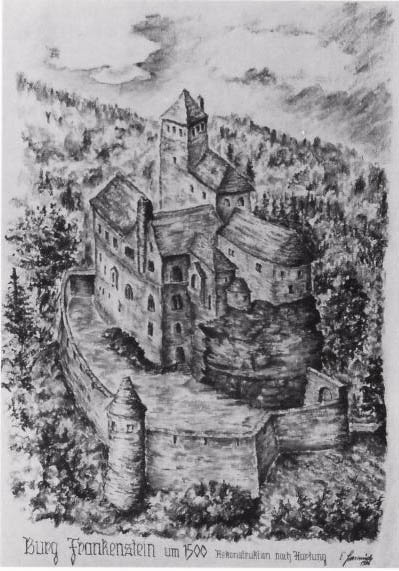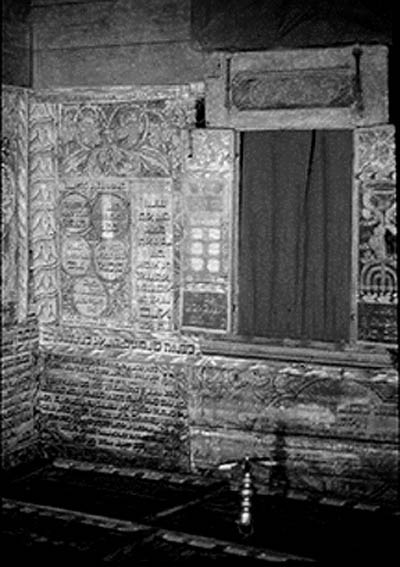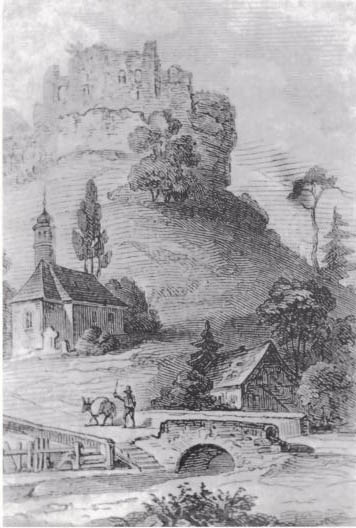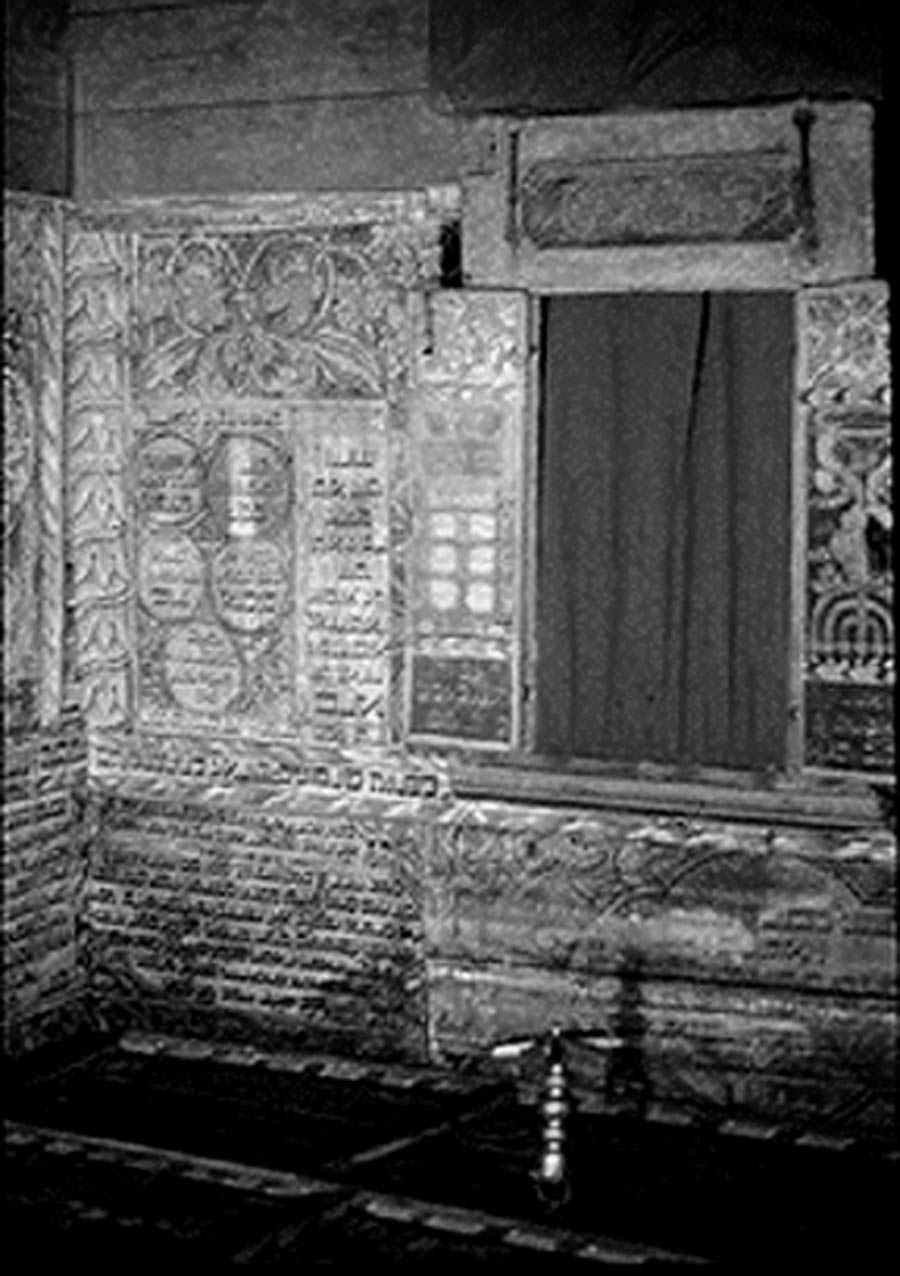Frankenstein: Historical Background
By Karl Lieser
The information that follows pertains to the village that was home to Friedrich Carl Christlieb before his conversion to Christianity. Written by Karl Lieser, the information that follows was translated by Frau Elfriede Jänecke, a retired teacher of English from Bad Dürkheim.
Frankenstein was first documentarily mentioned in 1146. The Castle of Frankenstein and the village of the same name belong close together.

The Castle of Frankenstein is one of the most interesting buildings of defense in the Palatinate. It is also one of the oldest nobility residences of the Palatinate. In the beginning of the 13th century, the counts of Leiningen built this castle. We know the names of the Knights Marquard, Friedrich, and Helenger of Frankenstein, who lived in the Castle between 1203 and 1231. Descendants of these knights, called castellani et ministeriales, lived in the castle up to the middle of the 14th century. In 1237, the castle – Castrum Frankenstein – was given to count Emich VI of Leiningen-Hardenburg.
Because of the division of the different counts of Leiningen, the castle was also divided. In 1416, Count Emich of Leiningen received the house (the Hall) of the Castle and the floor above the chapel. The Knights of Inseltheim (Eiselthum) received the other house and the former kitchen. The counts of Nassau-Saarbrücken received the upper buildings.
Shown at the right is an artist’s rendering of the Frankenstein Castle, as it appeared ca. 1500.
The castle is supposed to have been destroyed in 1482, but in the beginning of the 16th century, three Lords are known to have lived in the castle. From that fact, we can conclude that the castle was only partially inhabitable.
After 1525, there was further destruction that could not be repaired. The old castle of Frankenstein was said not to be inhabitable since 1560. Only the chapel of the castle was used for Divine Services still in 1703 by soldiers of the French Occupation Troops. The Palatine Electors, the Lords of Wallbrunn, and the Counts of Leiningen are documented as the last possessors of Frankenstein Castle.
The village with its history is closely connected with that of its castle. The village is situated in the so-called Dürkheim Valley, 4½ hours east of Kaiserslautern (the distance measured at that time).
As a lad growing up in Frankenstein, Simon [Friedrich Carl Christlieb] and his playmates would have found the old ruin an irresistible and fascinating place to explore. Similarly, his sons Jacob and Carl would have done the same when they lived within the shadow of the Limburg Ruin near Dürkheim.

Photo courtesy of John & Betty Crislip, Tampa, Florida.
Shown here is the interior of a small 18th-century German Synagogue that was contemporaneous with the one at Frankenstein. Their interiors may have been similar.

An old engraving at Frankenstein showing the castle ruin and the Reformed Church in its shadow.
In 1618, fifteen families lived in Frankenstein. During the Thirty-Years’ War, a large part of the population was killed or expelled. In 1648, when the war ended, there were only nine families residing Frankenstein.
At the beginning of the 18th century, the members of the Reformed Church built a church of their own. In 1787, there were recorded at Frankenstein 60 houses, 74 families, two schools, the synagogue, and the Reformed Church.
By 1932, with no Jews residing in the community, Catholics purchased the tiny building and converted it into a church, thereby doubling its size. By the following year, the building was completed, as seen in these photographs.

Here, the old synagogue is seen undergoing reconstruction in 1932. The original building was not as tall. The half-storied space above provided living quarters for the Rabbi and his family. Interior columns salvaged from the synagogue once graced the garden of one of Frankenstein’s citizens; however, all were destroyed in World War II.

Sankt Anna Katholische Kirche
Saint Ann Catholic Church - Built 1932
A small alcove in the
street-side interior wall holds a Menorah, in deference to the building's origins.






